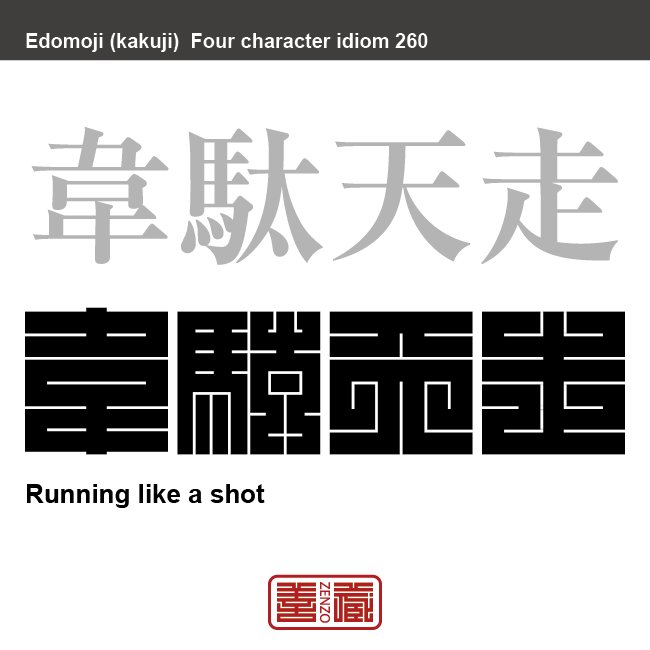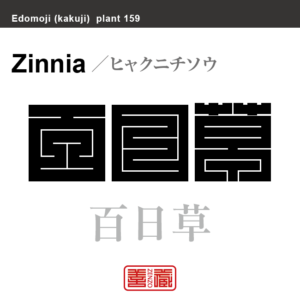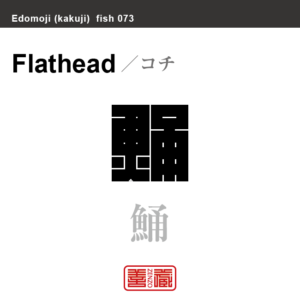韋駄天走 いだてんばしり 角字でことわざ、四字熟語

韋駄天走
いだてんばしり
Idaten-bashiri
Running like a shot
Unicode: [韋_0x97CB][駄_0x99C4][天_0x5929][走_0x8D70]
極めて足の速い人。また、その走りぶり。
「韋駄天」は、サンスクリット語のSkanda(スカンダ)に相当する音写。僧や寺院の守護神で、増長天八将軍の一。金剛杵をもち、非常に足が速いという。
元はバラモン教の神で、シバ神またはアグニ神の子という。仏教に取り入れられ、僧あるいは寺院の守護神となった。非常な速さで駆け、魔鬼を排除するとされるところから、足の速いことや人を表すようになった。
角字とは?
江戸時代に誕生した角字は、正方形のグリッド内にほぼ水平・垂直のラインのみで文字(漢字)が表現されるグラフィックアートです。
正方形という限られた空間の中に、あらゆる文字を閉じ込めようとするグラフィックデザインは、前述した、ミニマムな物に対する日本人特有のこだわりが随所に感じられます。
そのシンプルで有りながら、奥深い「角字」は多くの日本人を魅了し、お祭りで着る半被や印半纏(しるしばんてん)と言われる着物や、商標、印鑑、家紋、看板デザインなどに今日まで数多く使用されてきました。
What is Kakuji?
There is a style of penmanship called “Kakuji” in Japan. Edo-born Kakuji is a graphicart that expresses letters (kanji) with almost horizontal and vertical lines only.
The design which bases on many straight lines seems simple, or too plain even at its first glance; yet this beautiful artistic penmanship that encompasses the aesthetic of the Japanese in the Edo era, also known as “Iki”, and playfulness has long been inherited to this day, thanks to the masteries’ long years of efforts in training and refinement.
Kakuji with its simplicity and depth is used for designs such as trademark, hanko stamp, family crest and signboard.































































 2文字コード:MZ 3文字コード:MOZ 数字:508 ITU:258 ccTLD:.mz
2文字コード:MZ 3文字コード:MOZ 数字:508 ITU:258 ccTLD:.mz







































































































































